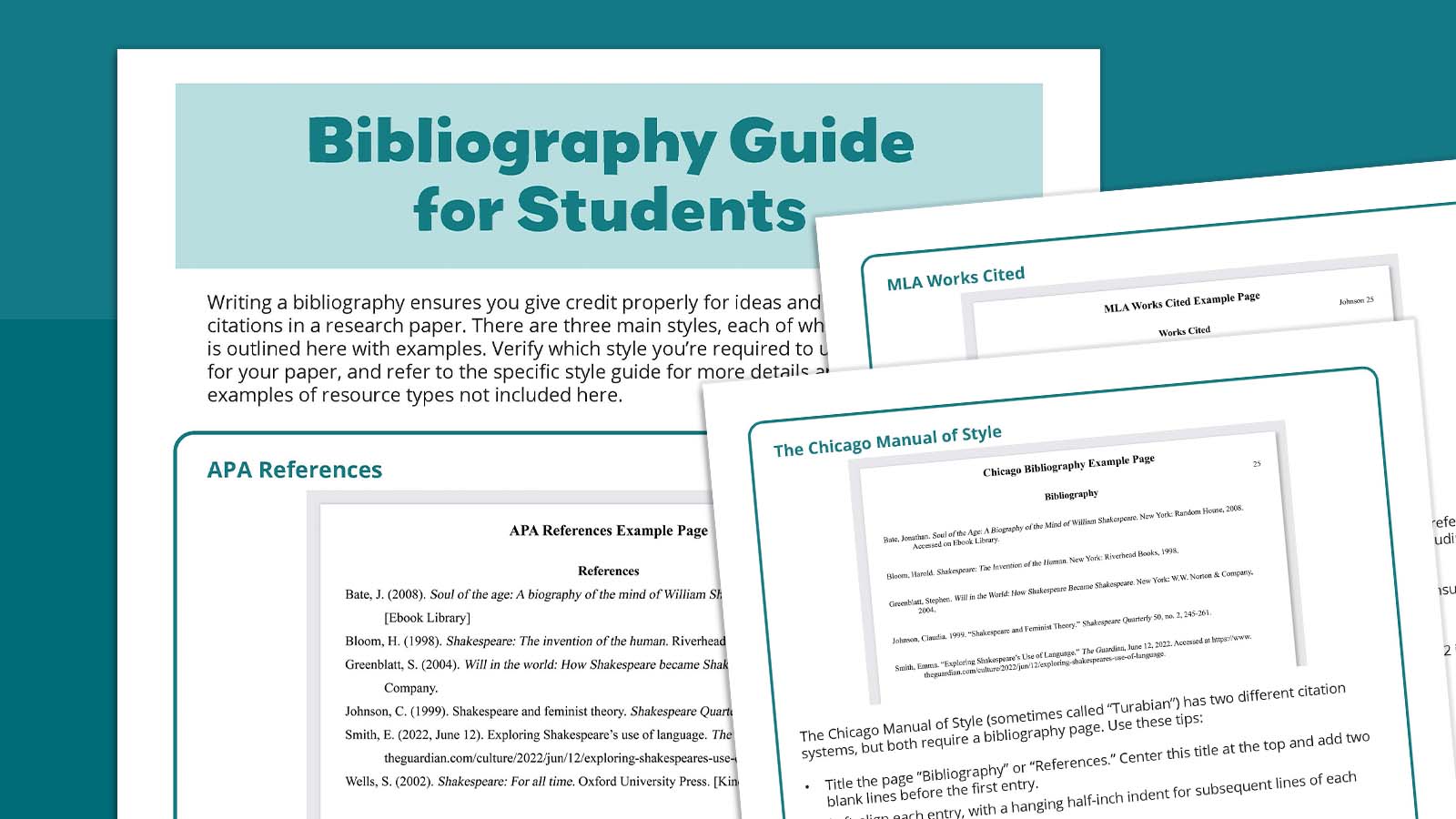

Writing a research paper involves a lot of work. Students need to consult a variety of sources to gather reliable information and ensure their points are well supported. Research papers include a bibliography, which can be a little tricky for students. Learn how to write a bibliography in multiple styles and find basic examples below.
Plus grab our printable Bibliography Guide for Students with examples from all three major style guides: APA (American Psychological Association), MLA (Modern Language Association), or The Chicago Manual of Style. Just fill out the form on this page to get the free guide.
IMPORTANT: Each style guide has its own very specific rules, and they often conflict with one another. Additionally, each type of reference material has many possible formats, depending on a variety of factors. The overviews shown here are meant to guide students in writing basic bibliographies, but this information is by no means complete. Students should always refer directly to the preferred style guide to ensure they’re using the most up-to-date formats and styles.
When you’re researching a paper, you’ll likely consult a wide variety of sources. You may quote some of these directly in your work, summarize some of the points they make, or simply use them to further the knowledge you need to write your paper. Since these ideas are not your own, it’s vital to give credit to the authors who originally wrote them. This list of sources, organized alphabetically, is called a bibliography.
A bibliography should include all the materials you consulted in your research, even if you don’t quote directly from them in your paper. These resources could include (but aren’t limited to):
These two terms are sometimes used interchangeably, but they actually have different meanings. As noted above, a bibliography includes all the materials you used while researching your paper, whether or not you quote from them or refer to them directly in your writing.
A list of references only includes the materials you cite throughout your work. You might use direct quotes or summarize the information for the reader. Either way, you must ensure you give credit to the original author or document. This section can be titled “List of Works Cited” or simply “References.”
Your teacher may specify whether you should include a bibliography or a reference list. If they don’t, consider choosing a bibliography to show all the works you used in researching your paper. This can help the reader see that your points are well supported and allow them to do further reading on their own if they’re interested.
Citations refer to direct quotations from a text that are woven into your own writing. There are a variety of ways to write citations, including footnotes and endnotes. These are generally shorter than the entries in a reference list or bibliography. Learn more about writing citations here.
Depending on the reference material, bibliography entries include a variety of information intended to help a reader locate the material if they want to refer to it themselves. These entries are listed in alphabetical order and may include:
ADVERTISEMENTThese entries don’t generally need to include specific page numbers or locations within the work (except for print magazine or journal articles). That type of information is usually only needed in a footnote or endnote citation.
In most cases, writers use one of three major style guides: APA (American Psychological Association), MLA (Modern Language Association), or The Chicago Manual of Style. There are many others as well, but these three are the most common choices for K–12 students.
Many teachers will state their preference for one style guide over another. If they don’t, you can choose your own preferred style. However, you should also use that guide for your entire paper, following their recommendations for punctuation, grammar, and more. This will ensure you are consistent throughout.
Below, you’ll learn how to write a simple bibliography using each of the three major style guides. We’ve included details for books and e-books, periodicals, and electronic sources like websites and videos. If the reference material type you need to include isn’t shown here, refer directly to the style guide you’re using.
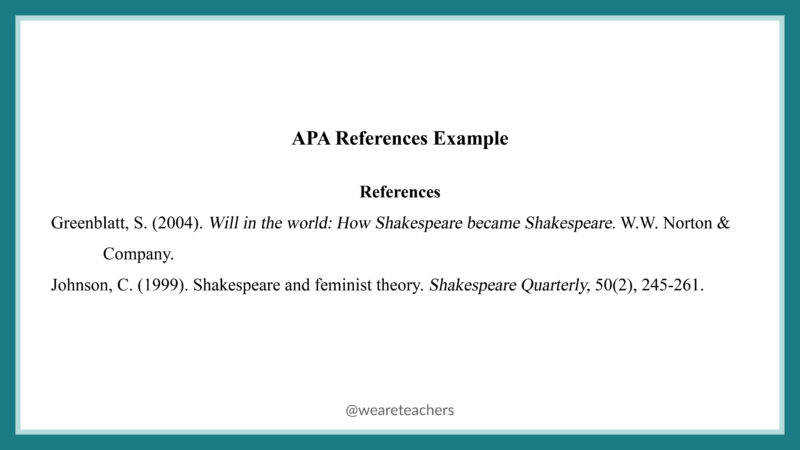
Technically, APA style calls for a list of references instead of a bibliography. If your teacher requires you to use the APA style guide, you can limit your reference list to only items you cite throughout your work.
Here are some general notes on writing an APA reference list:
For books, APA reference list entries use this format (only include the publisher’s website for e-books):
Last Name, First Initial. Middle Initial. (Publication date). Title with only first word capitalized (unless there’s a proper name/noun). Publisher. Publisher’s website
For journal or magazine articles, use the following format. If you viewed the article online, include the URL at the end of the citation.
Last Name, First Initial. Middle Initial. (Publication date). Title of article. Magazine or Journal Title (Volume number)Issue number, page numbers. URL
Here’s the format for newspapers. For print editions, include the page number/s. For online articles, include the full URL:
Last Name, First Initial. Middle Initial. (Year, Month Date) Title of article. Newspaper title. Page number/s. URL
For articles with a specific author on a website, use this format:
Last Name, First Initial. Middle Initial. (Year, Month Date). Title. Site name. URL
When an online article doesn’t include a specific author or date, list it like this:
Title. (Year, Month Date). Site name. Retrieved Month Date, Year, from URL
When you need to list a YouTube video, use the name of the account that uploaded the video, and format it like this:
Name of Account. (Upload year, month day). Title [Video]. YouTube. URL
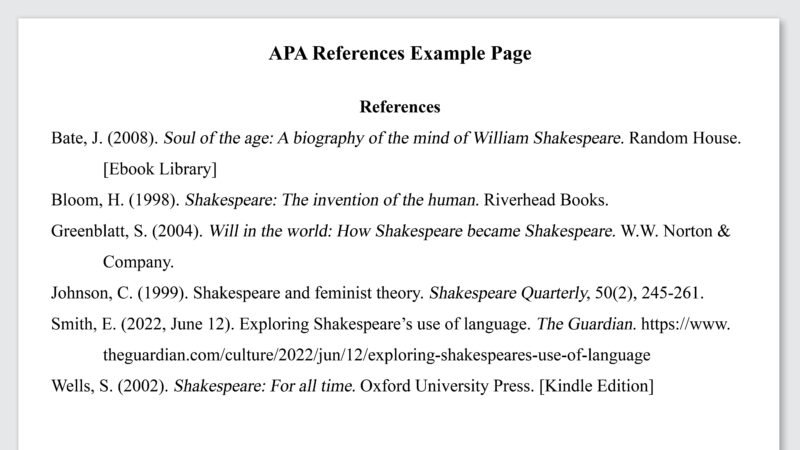
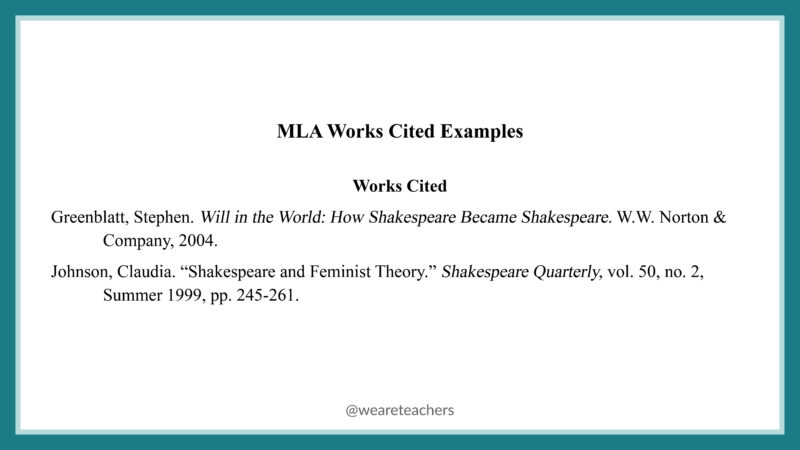
MLA style calls for a Works Cited section, which includes all materials quoted or referred to in your paper. You may also include a Works Consulted section, including other reference sources you reviewed but didn’t directly cite. Together, these constitute a bibliography. If your teacher requests an MLA Style Guide bibliography, ask if you should include Works Consulted as well as Works Cited.
For both MLA Works Cited and Works Consulted sections, use these general guidelines:
For books, MLA reference list entries use the following format. Add the URL at the end for e-books.
Last Name, First Name Middle Name. Title. Publisher, Date. URL
Here’s the MLA-style format for magazines, journals, and newspapers. For online articles, add the URL at the end of the listing:
For magazines and journals:
Last Name, First Name. “Title: Subtitle.” Name of Journal, volume number, issue number, Date of Publication, First Page Number–Last Page Number.
When citing newspapers, include the page number/s for print editions or the URL for online articles:
Last Name, First Name. “Title of article.” Newspaper title. Page number/s. Year, month day. Page number or URL
For articles with a specific author on a website, use this format:
Last Name, First Name. Year. “Title.” Month Day, Year published. URL
When an online article doesn’t include a specific author or date, list it like this:
Website. n.d. “Title.” Accessed Day Month Year. URL.
Here’s how to list YouTube and other online videos:
Creator, if available. “Title of Video.” Website. Uploaded by Username, Day Month Year. URL.
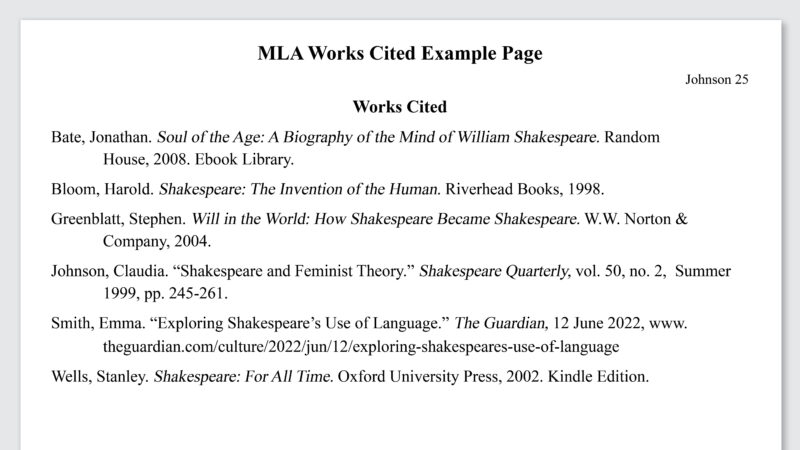
The Chicago Manual of Style (sometimes called “Turabian”) actually has two options for citing reference material: Notes and Bibliography and Author-Date. Regardless of which you use, you’ll need a complete detailed list of reference items at the end of your paper. The examples below demonstrate how to write that list.
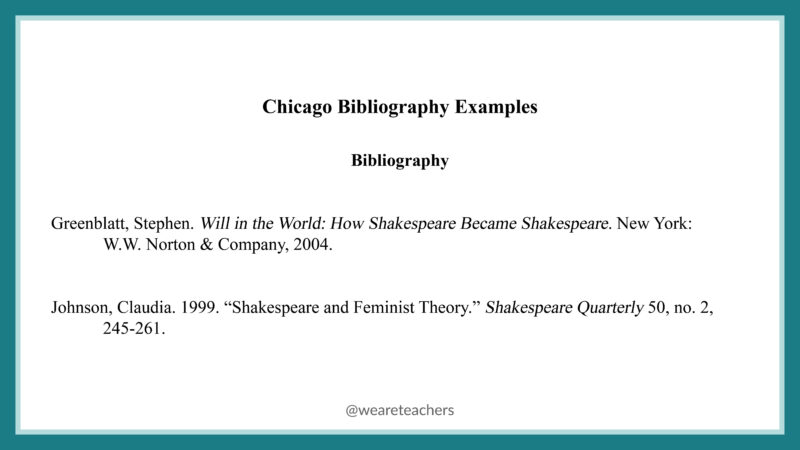
Here are some general notes on writing a Chicago-style bibliography:
For books, Chicago-style reference list entries use the following format. (For print books, leave off the information about how the book was accessed.)
Last Name, First Name Middle Name. Title. City of Publication: Publisher, Date. How e-book was accessed.
Here’s the style format for magazines, journals, and newspapers. For online articles, add the URL at the end of the listing.
For journal and magazine articles, use this format:
Last Name, First Name. Year of Publication. “Title: Subtitle.” Name of Journal, Volume Number, issue number, First Page Number–Last Page Number. URL.
When citing newspapers, include the URL for online articles:
Last Name, First Name. Year of Publication. “Title: Subtitle.” Name of Newspaper, Month day, year. URL.
For articles with a specific author on a website, use this format:
Last Name, First Name Middle Name. “Title.” Site Name. Year, Month Day. URL.
When an online article doesn’t include a specific author or date, list it like this:
“Title.” Site Name. URL. Accessed Month Day, Year.
Here’s how to list YouTube and other online videos:
Creator or Username. “Title of Video.” Website video, length. Month Day, Year. URL.
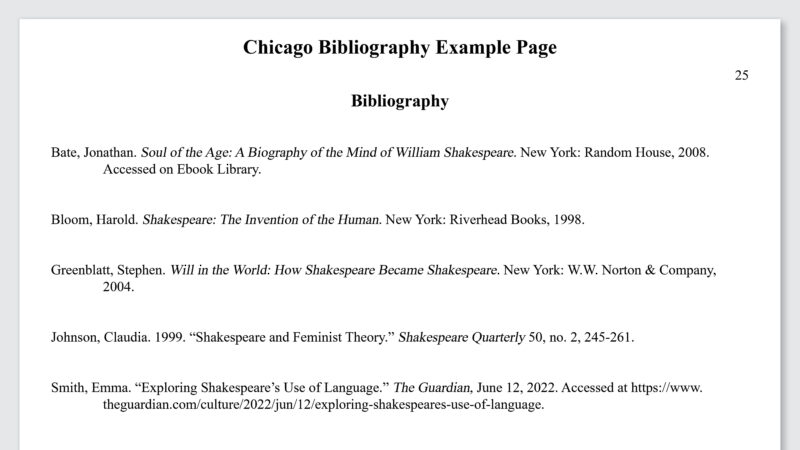
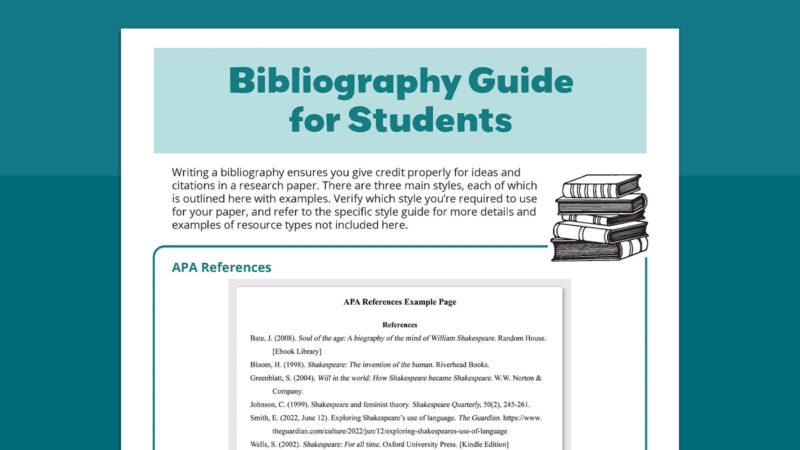
Just fill out the form on this page to grab our printable Bibliography Guide for Students with examples from all three major style guides: APA (American Psychological Association), MLA (Modern Language Association), or The Chicago Manual of Style.